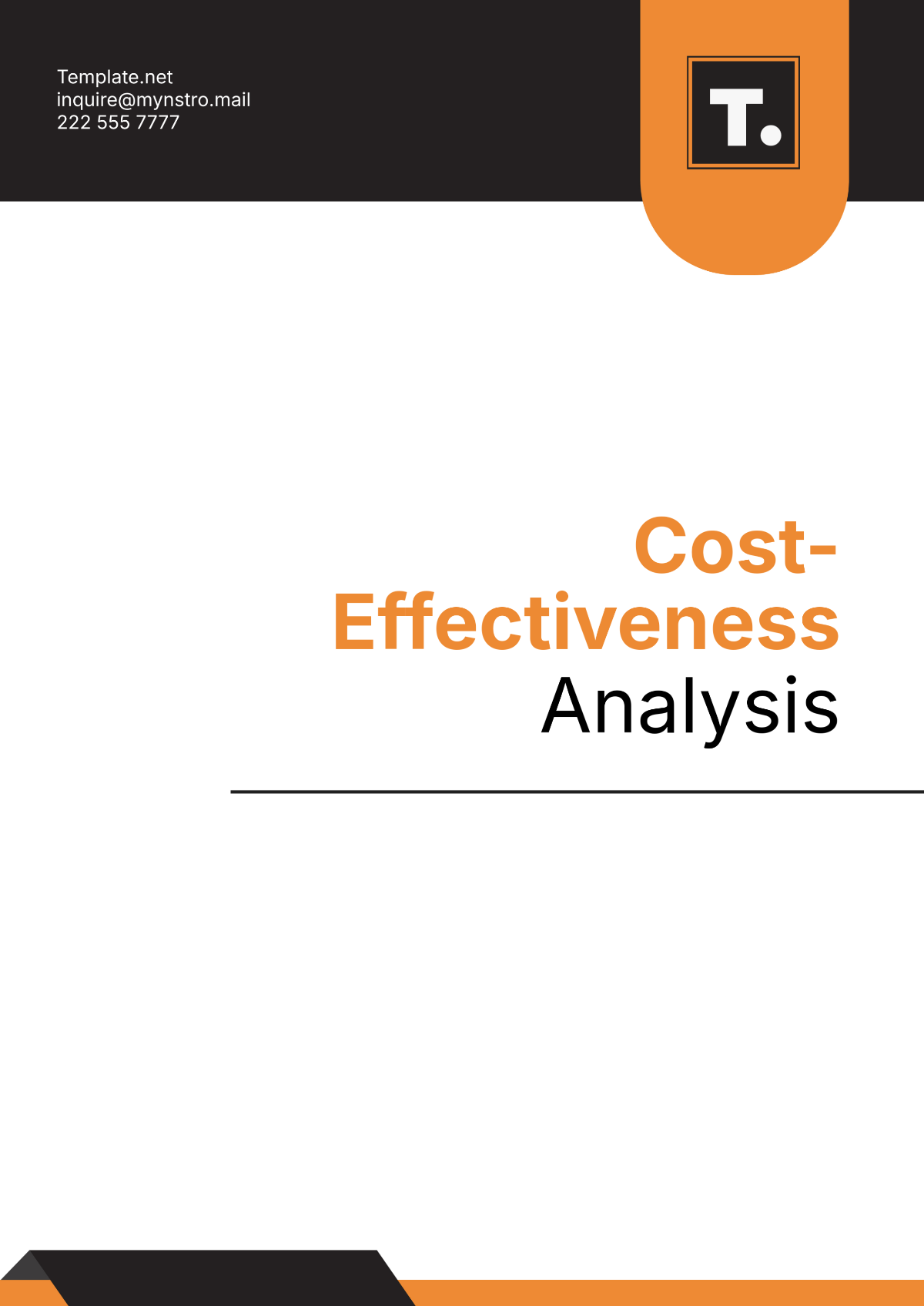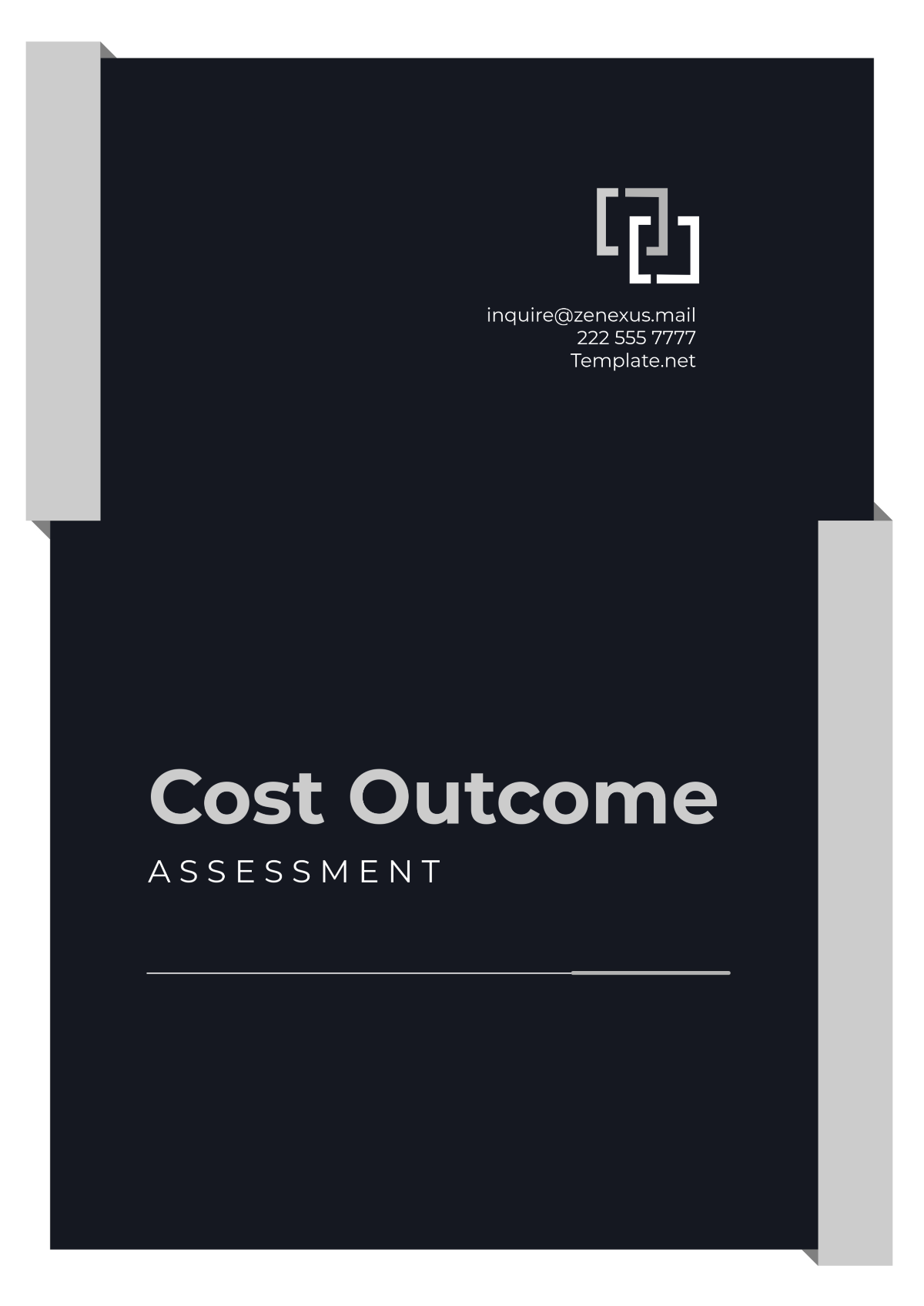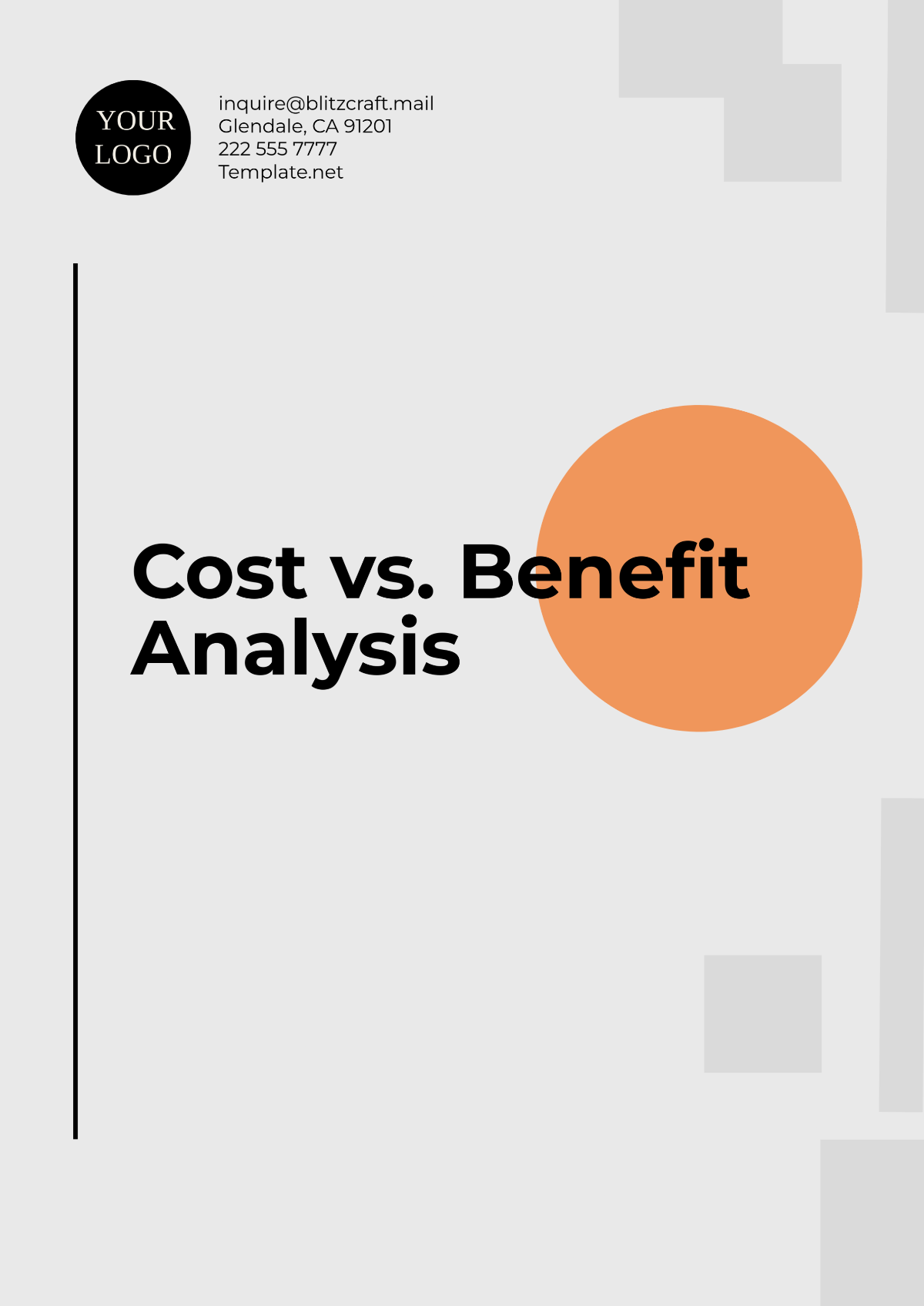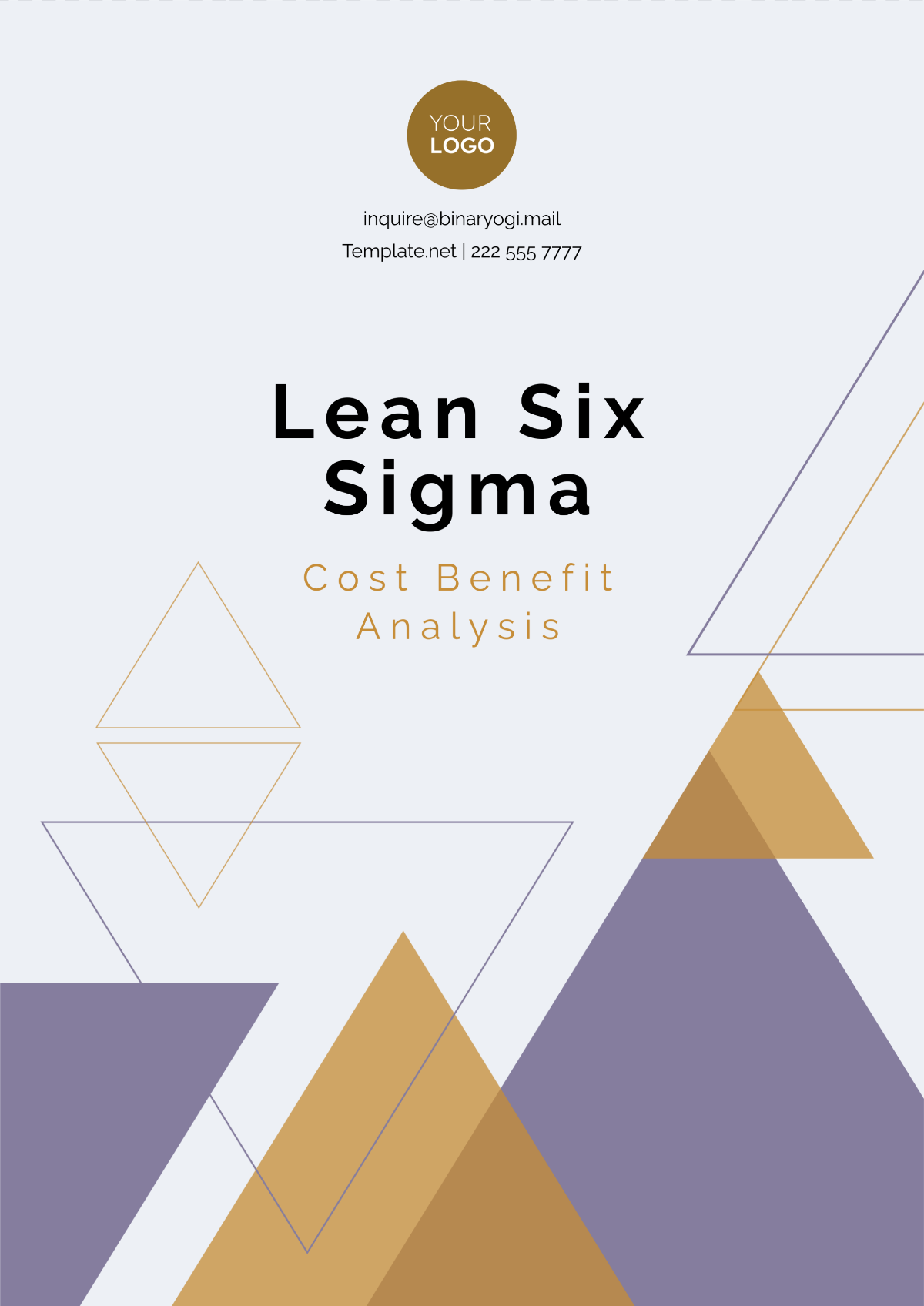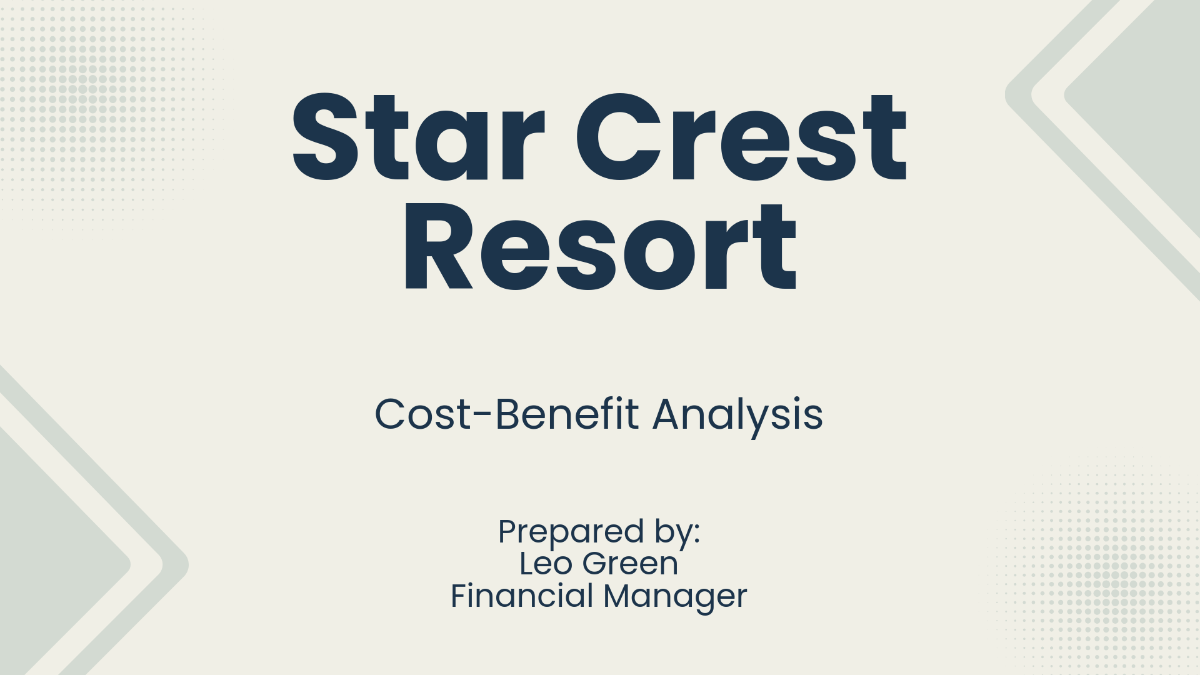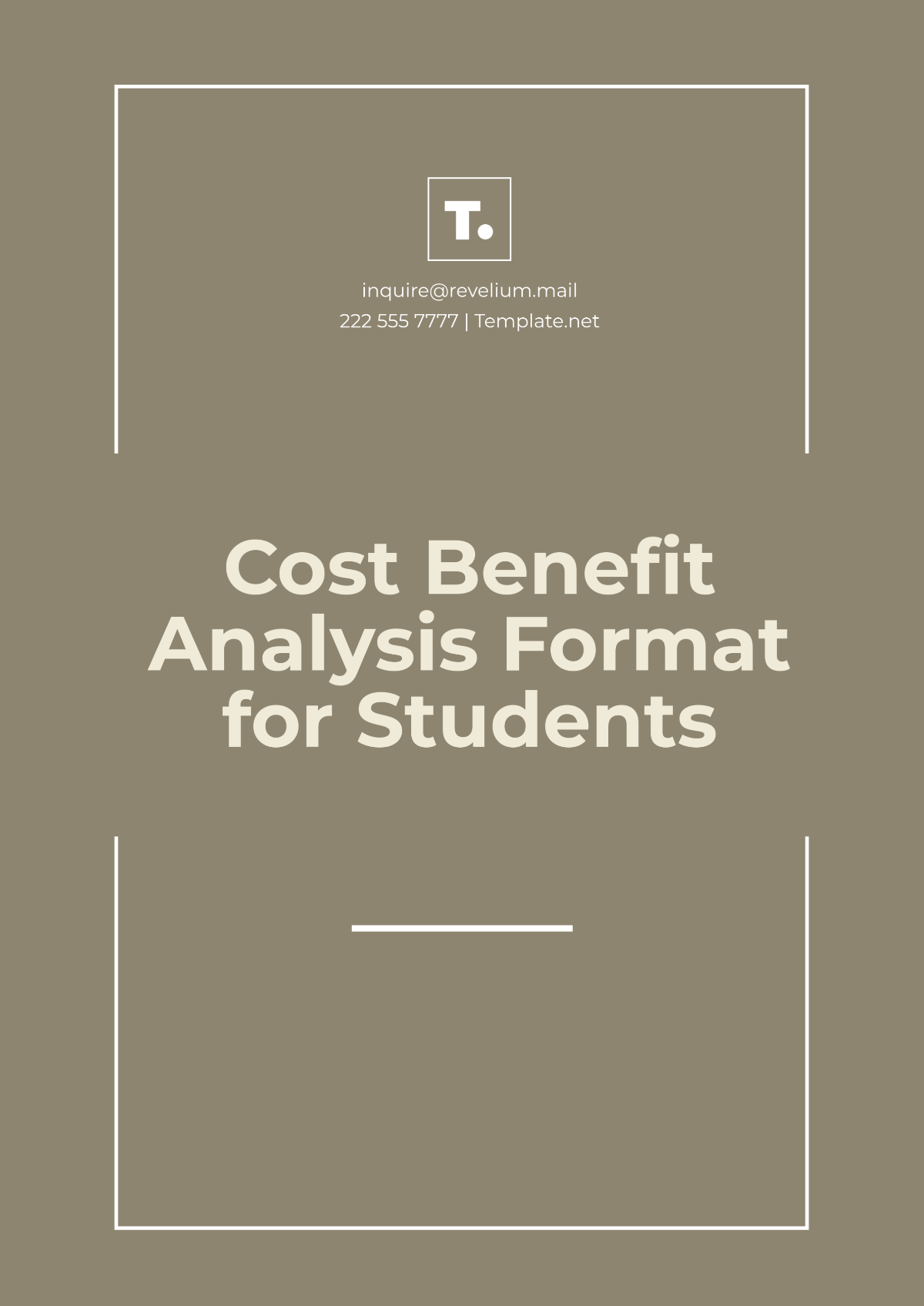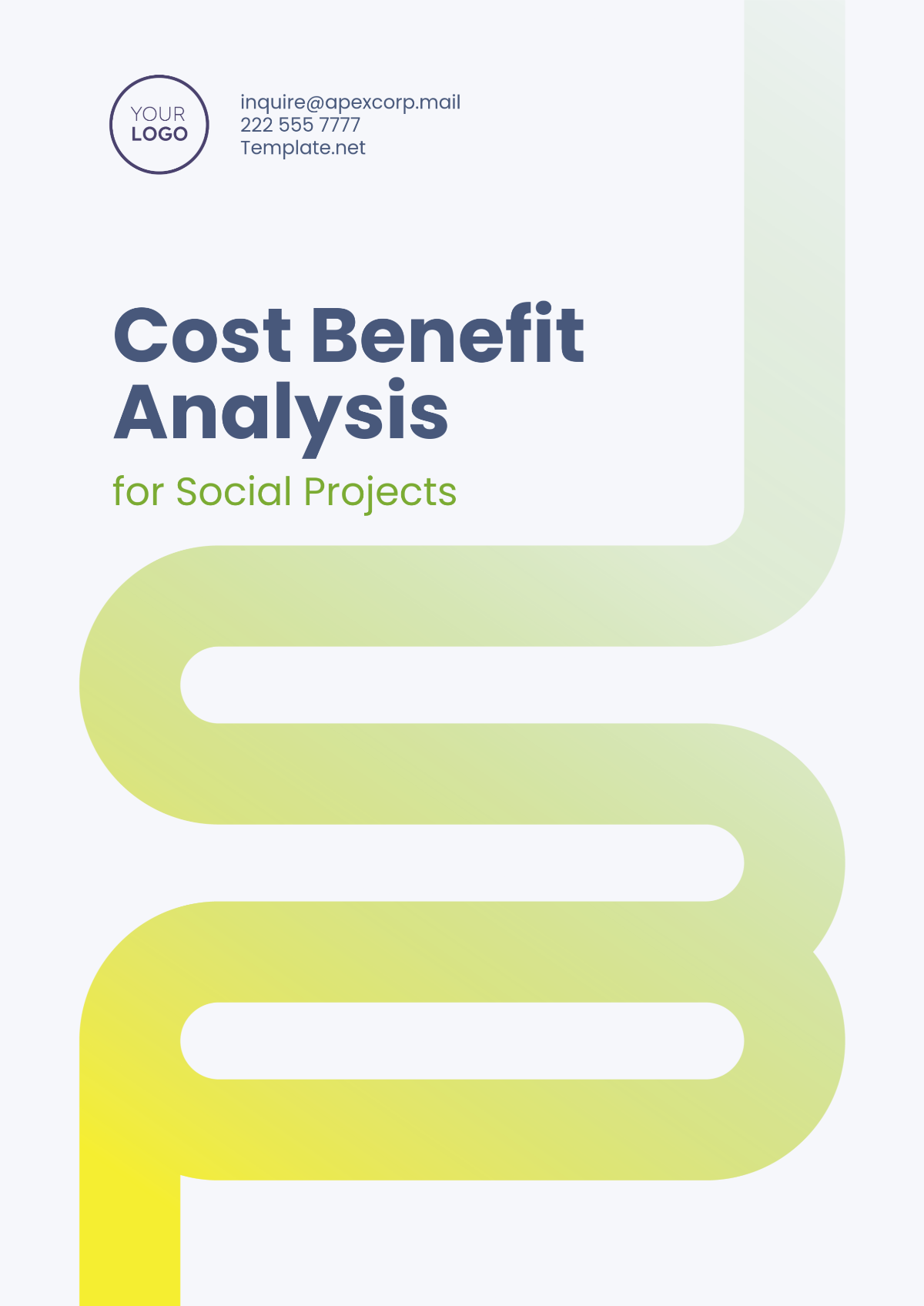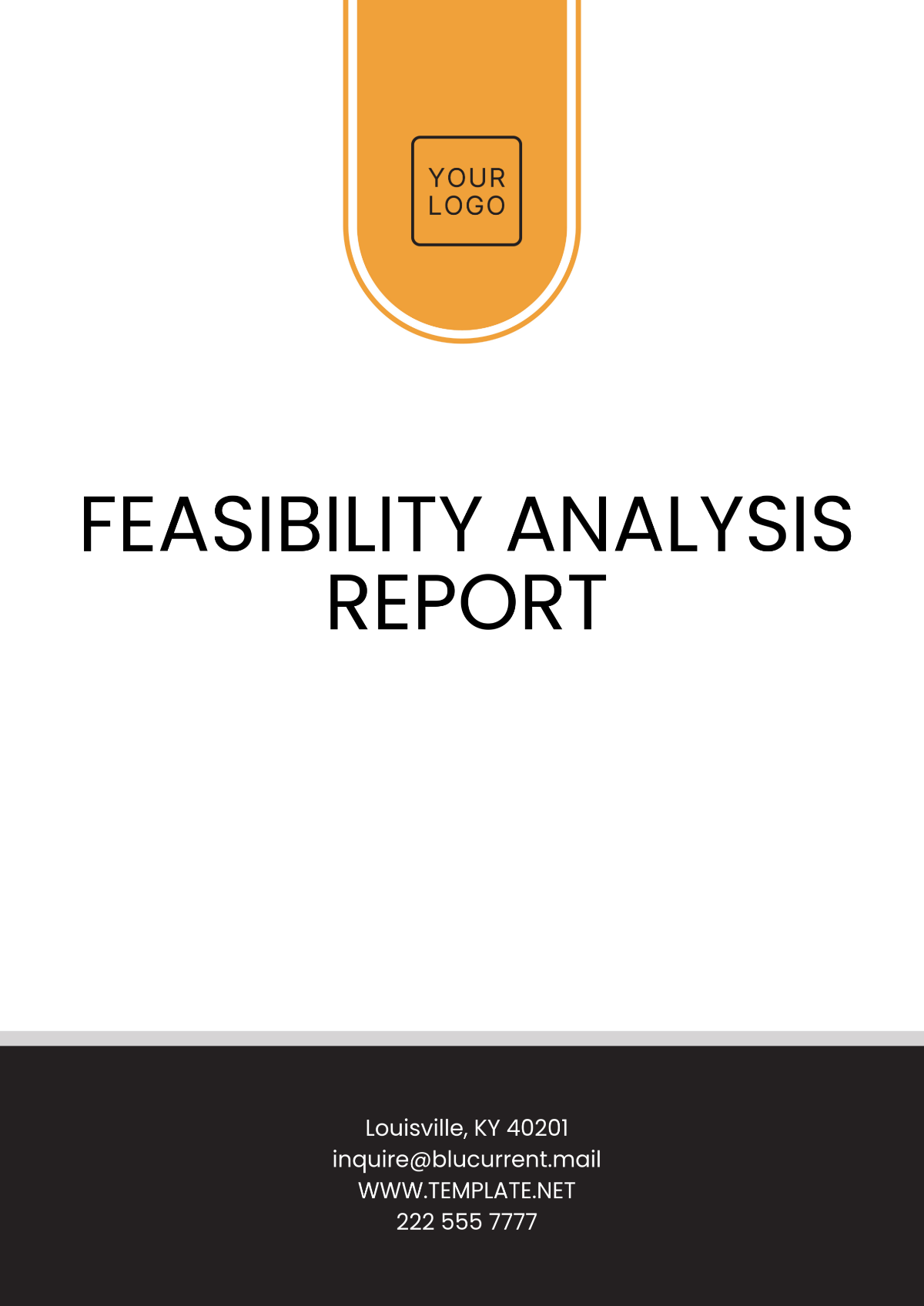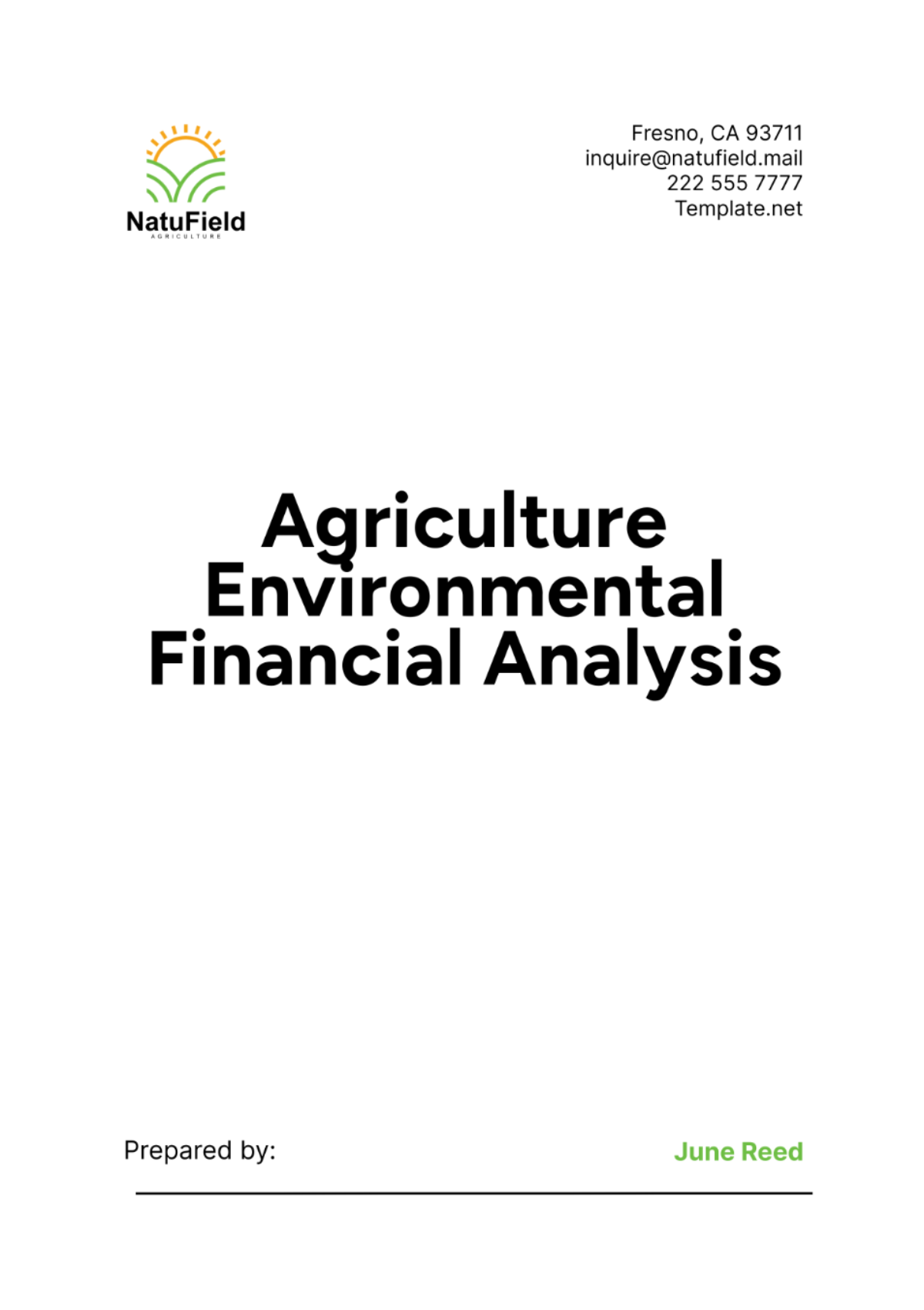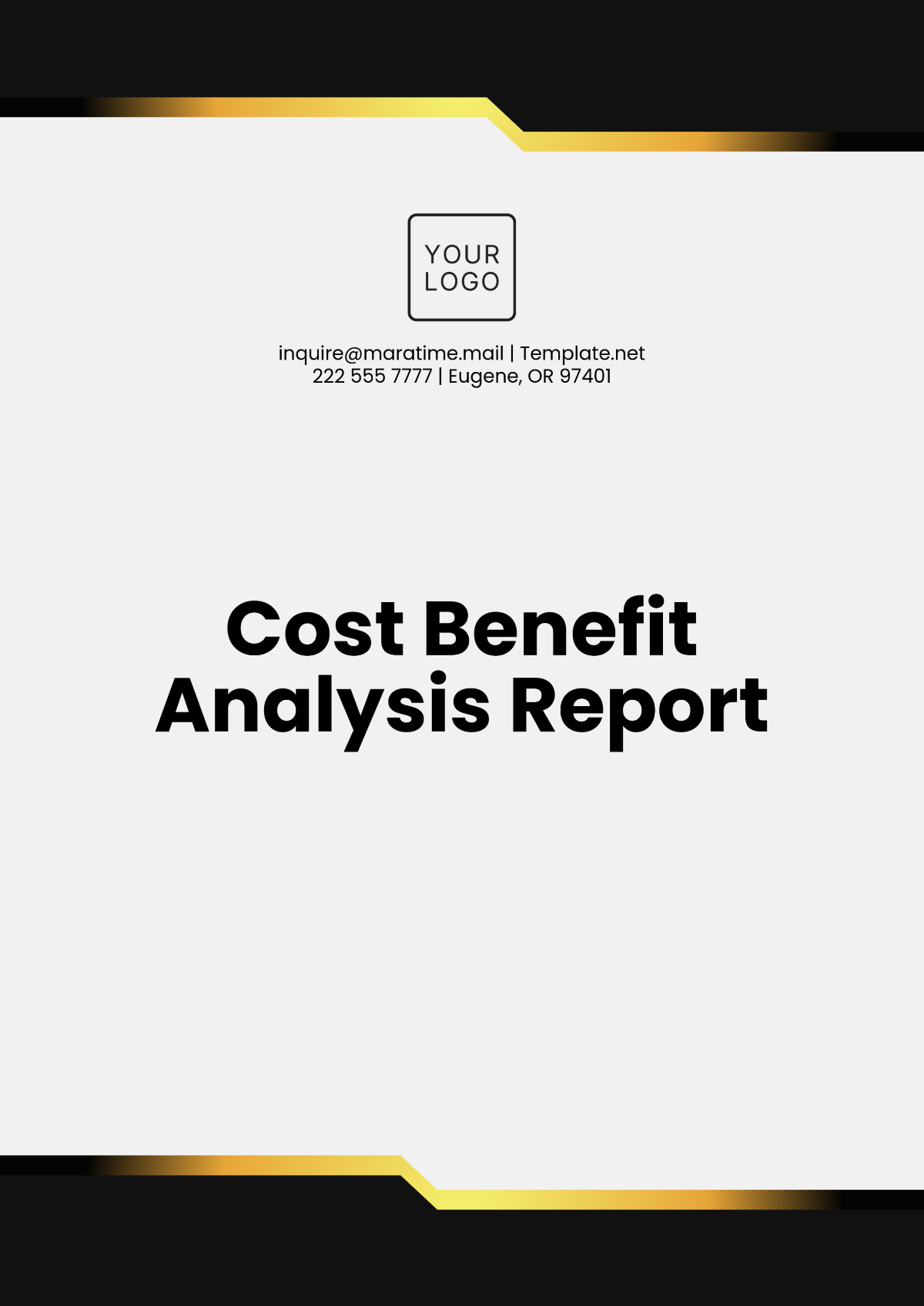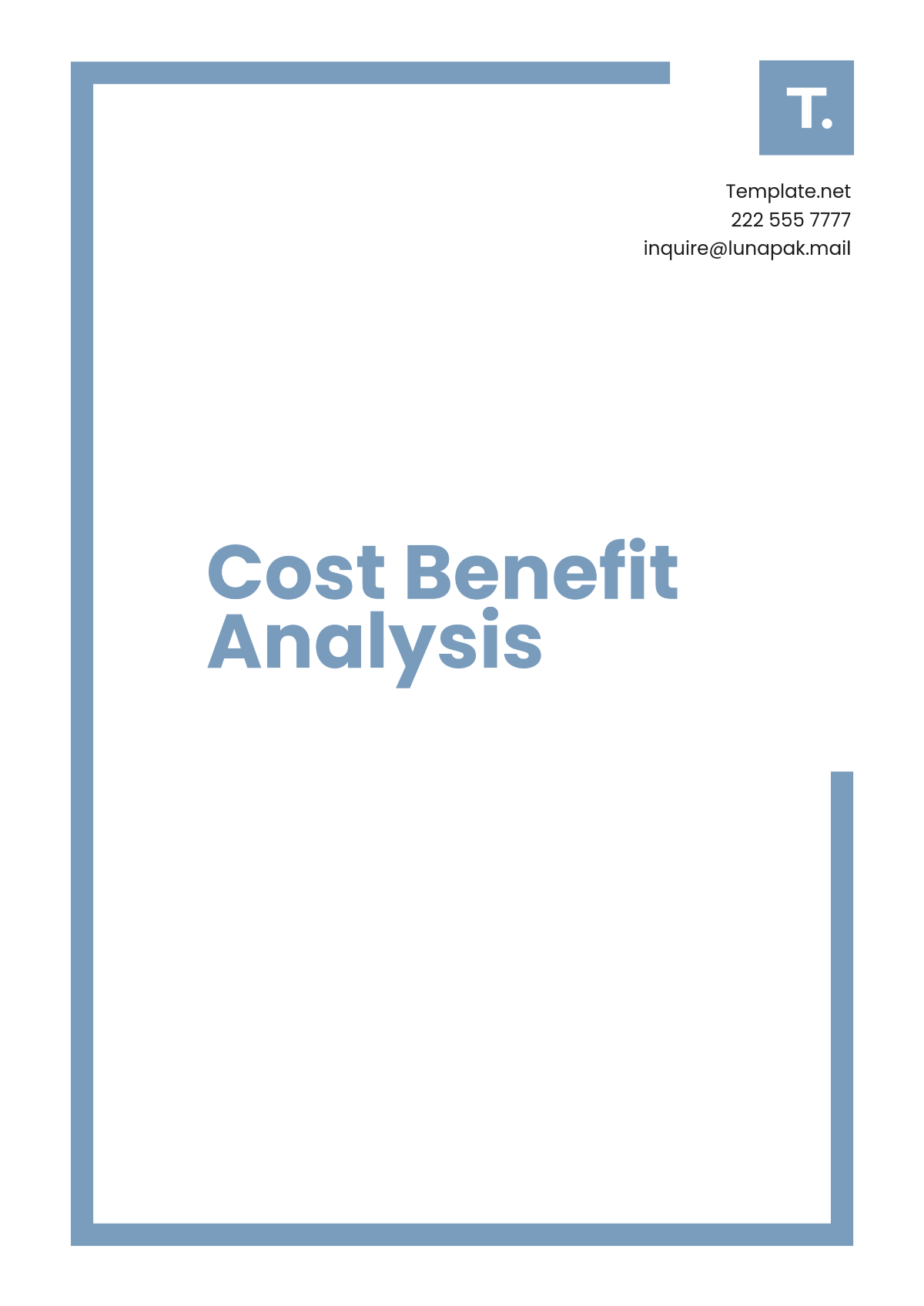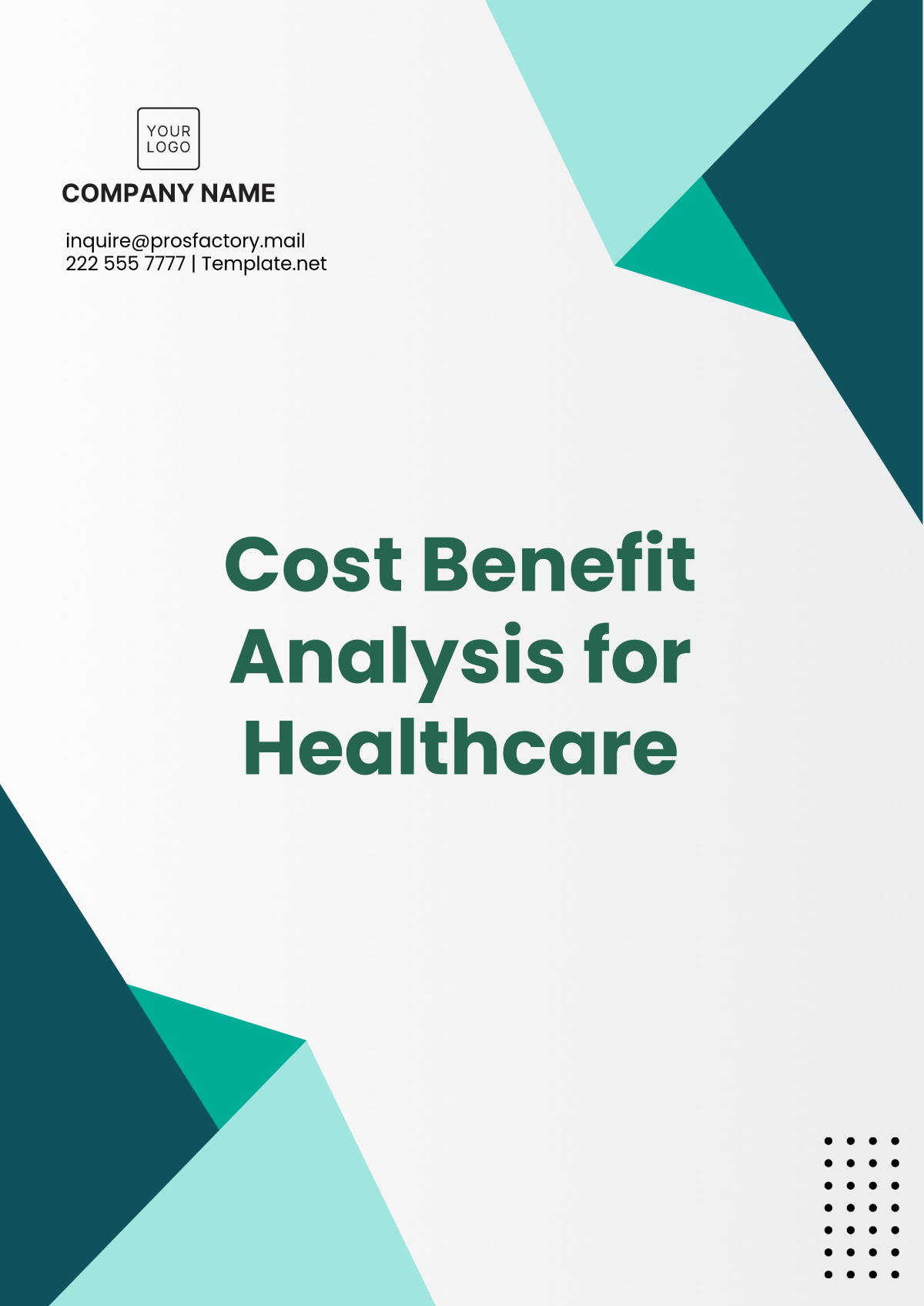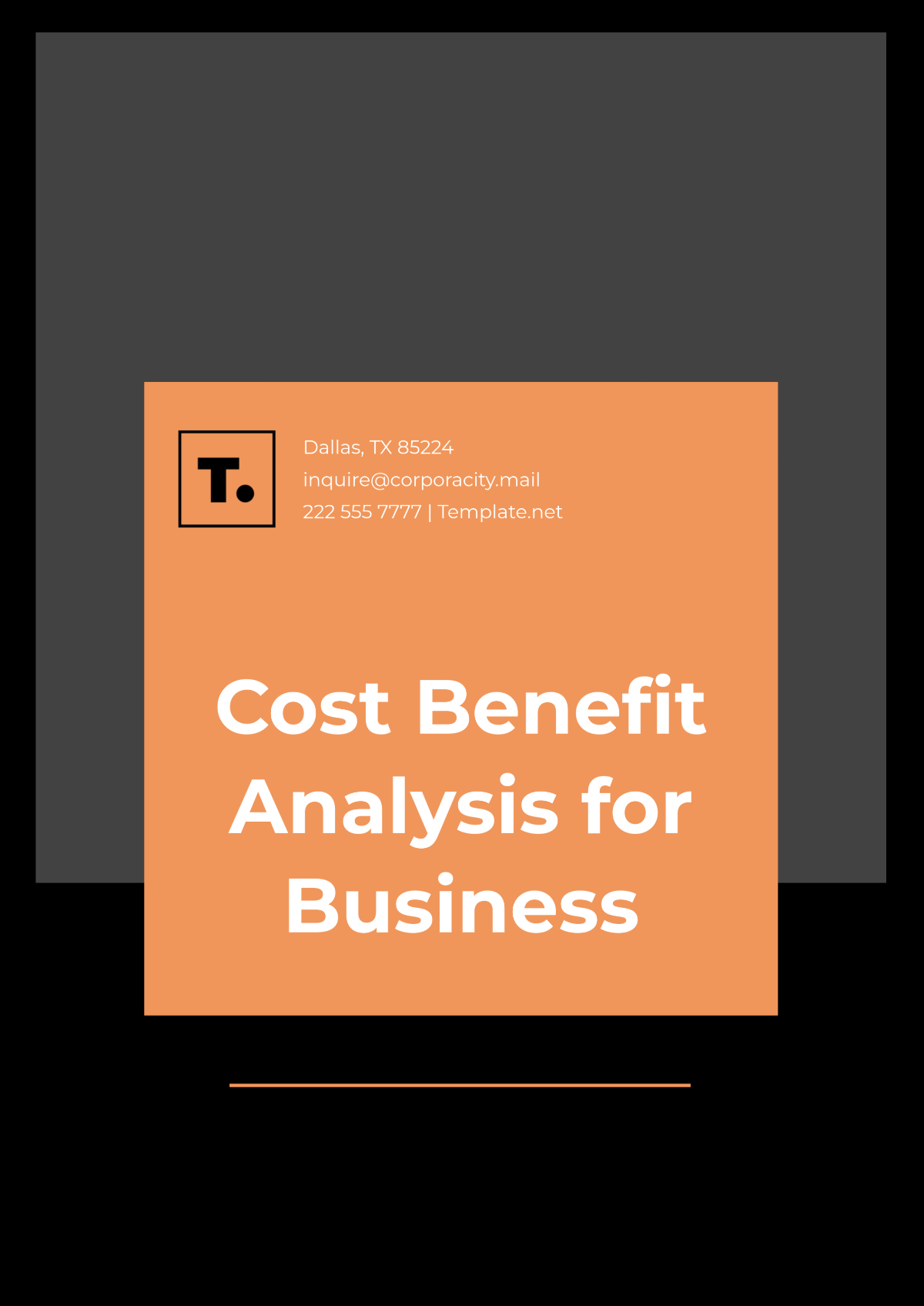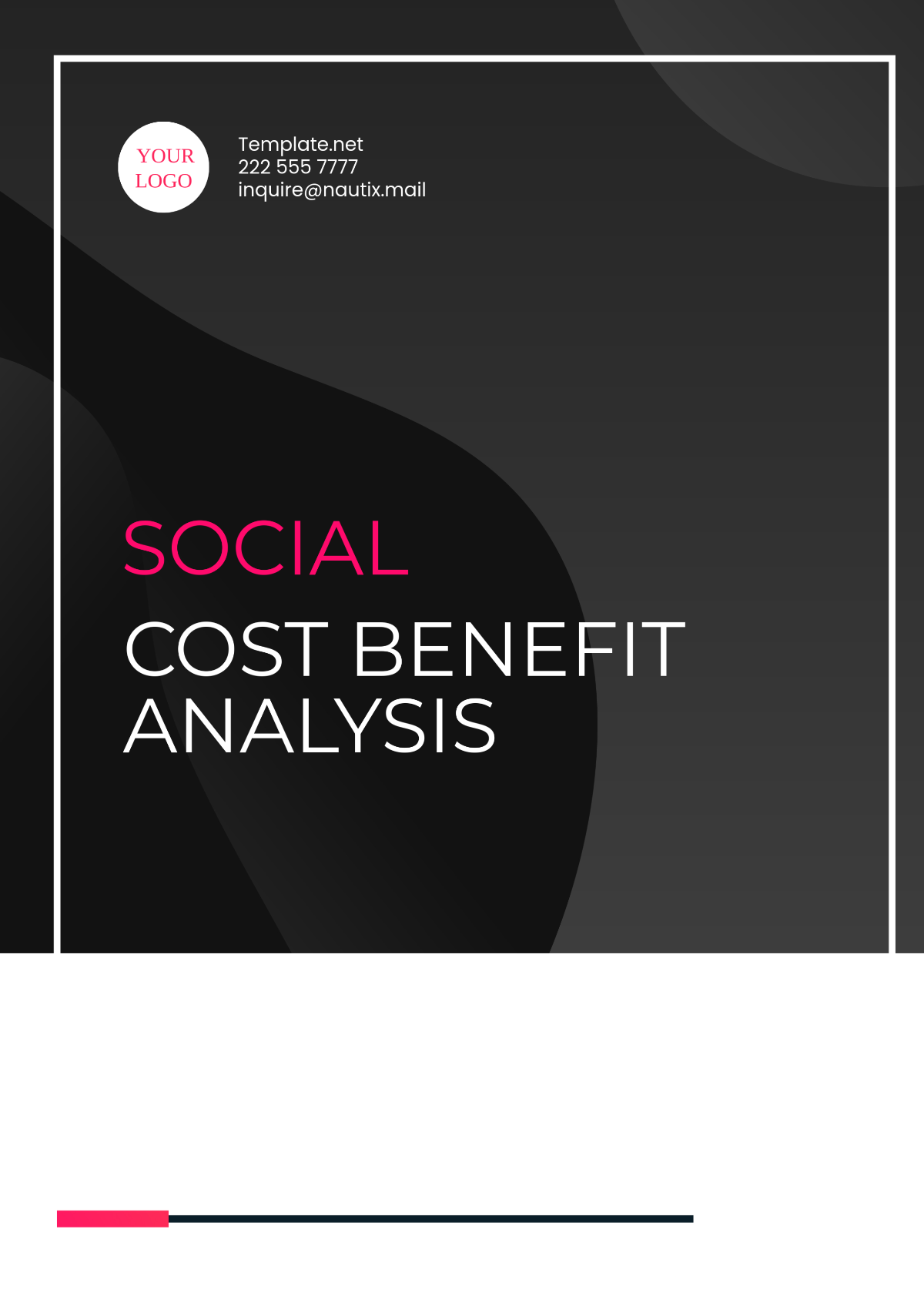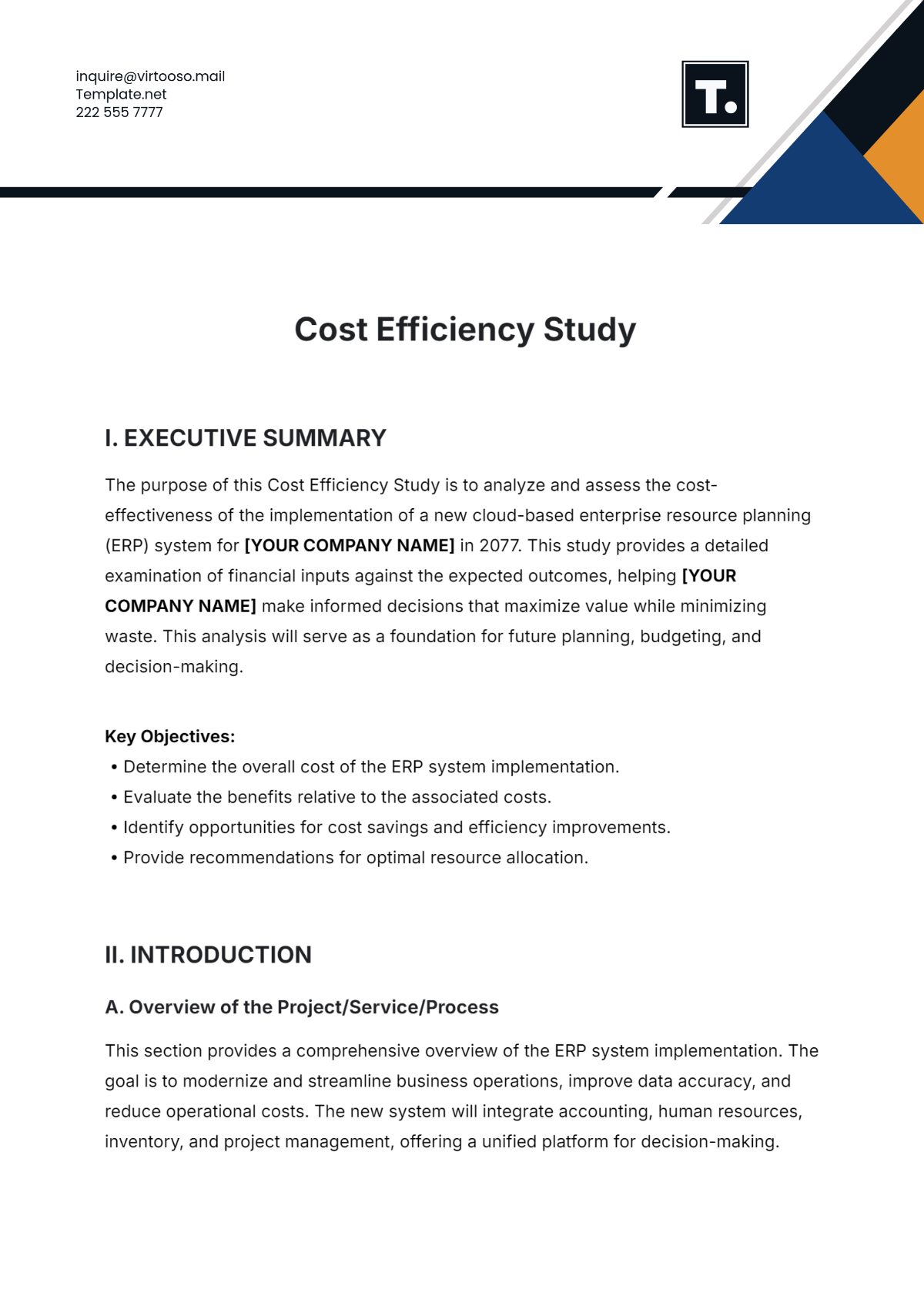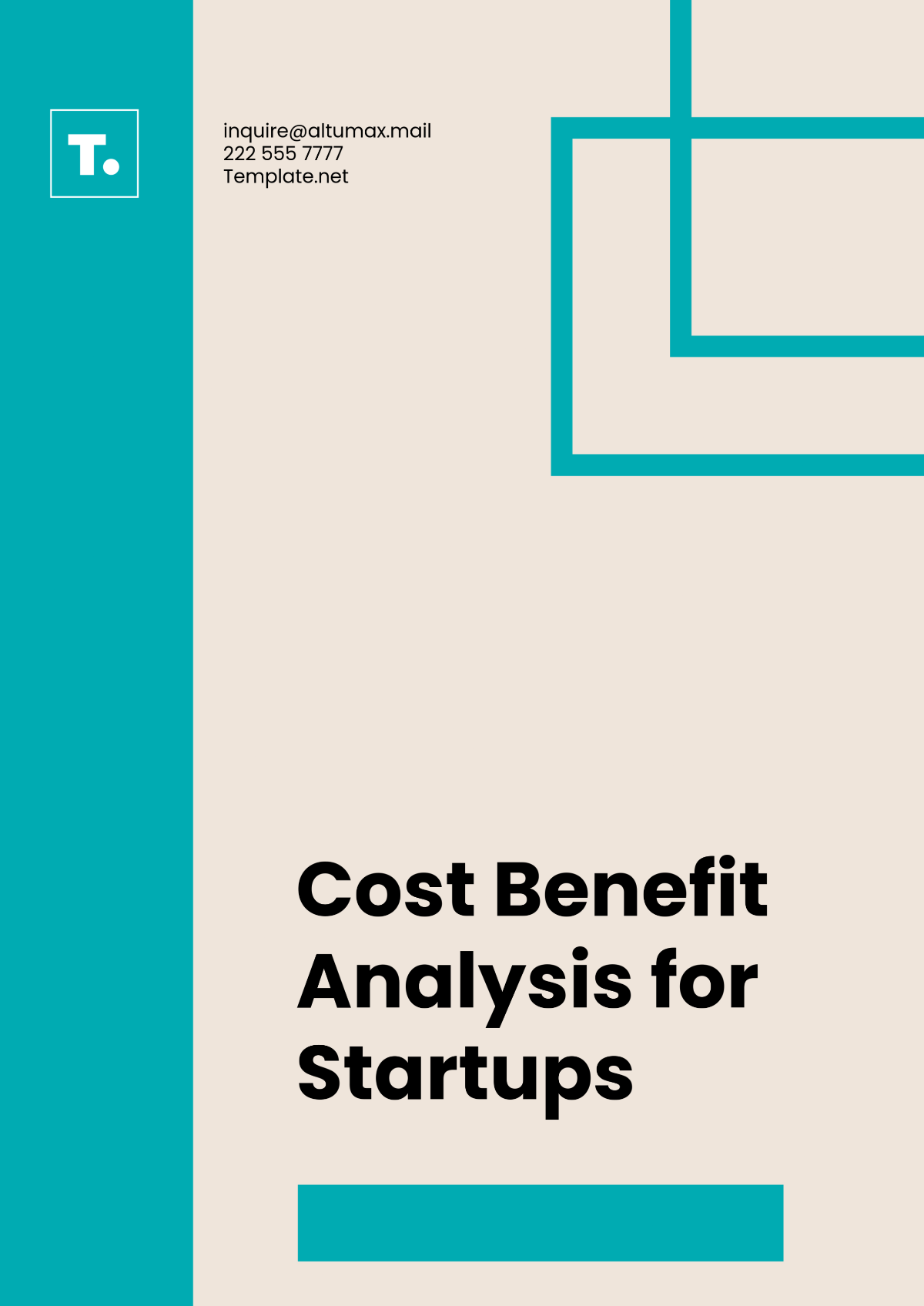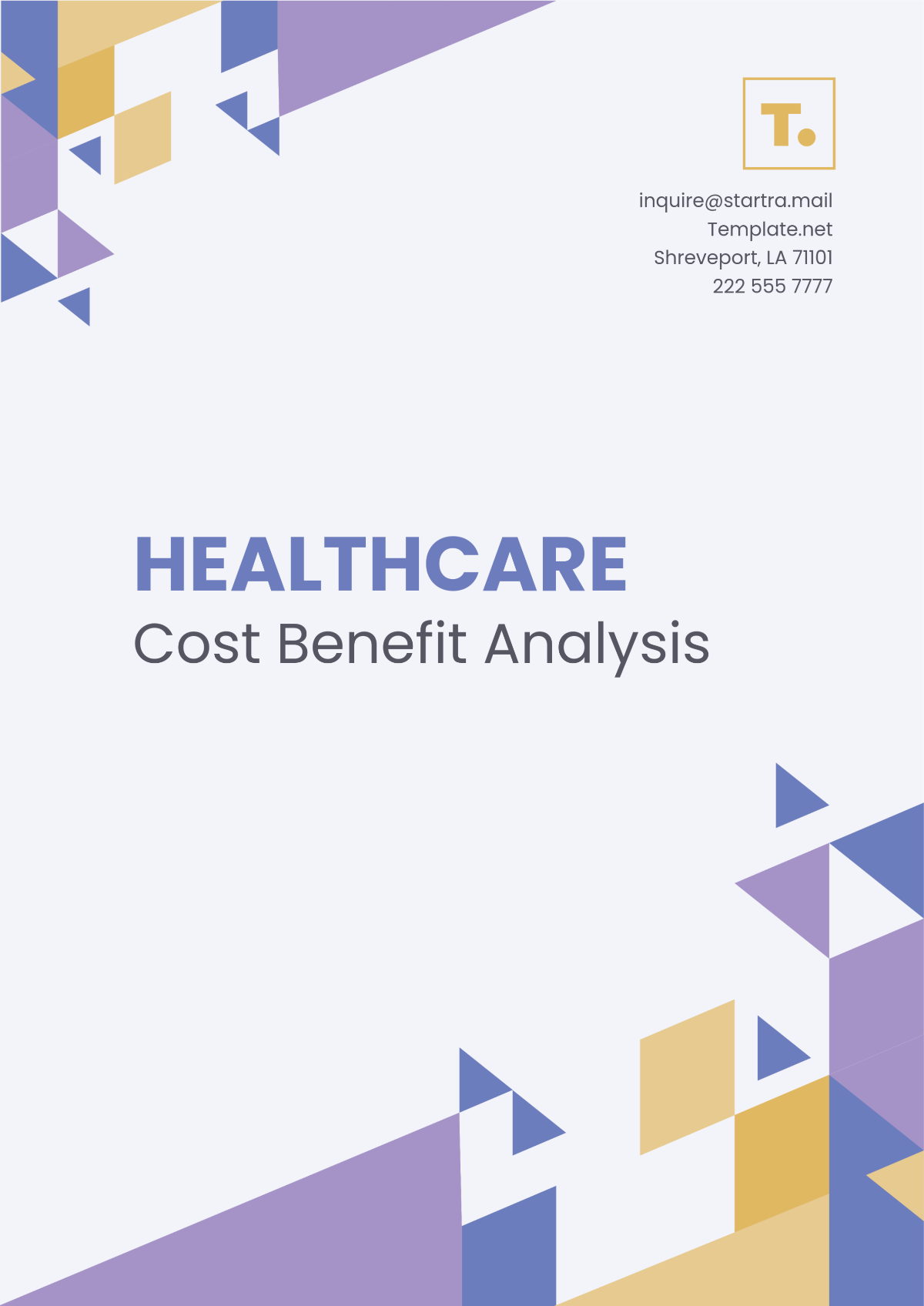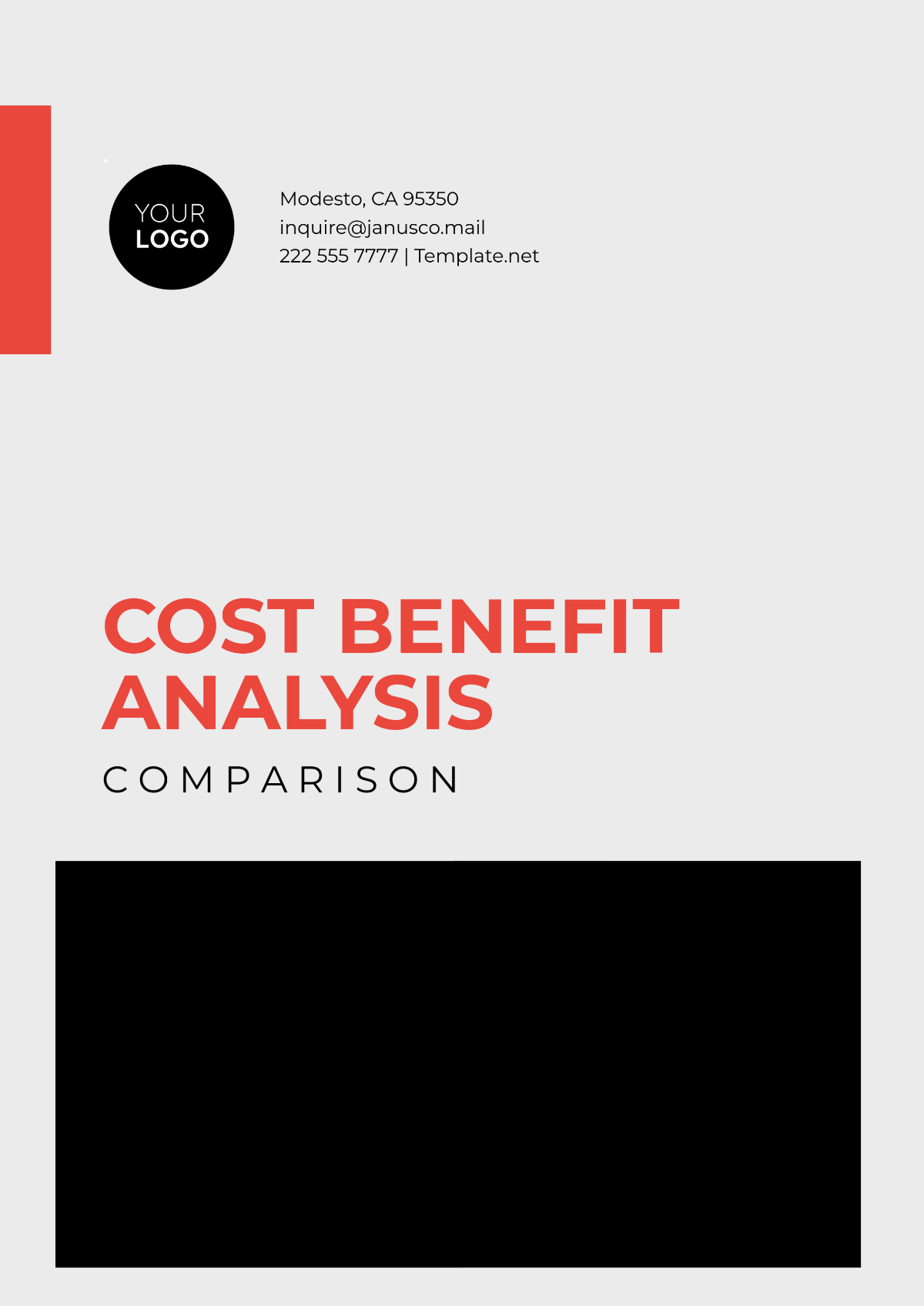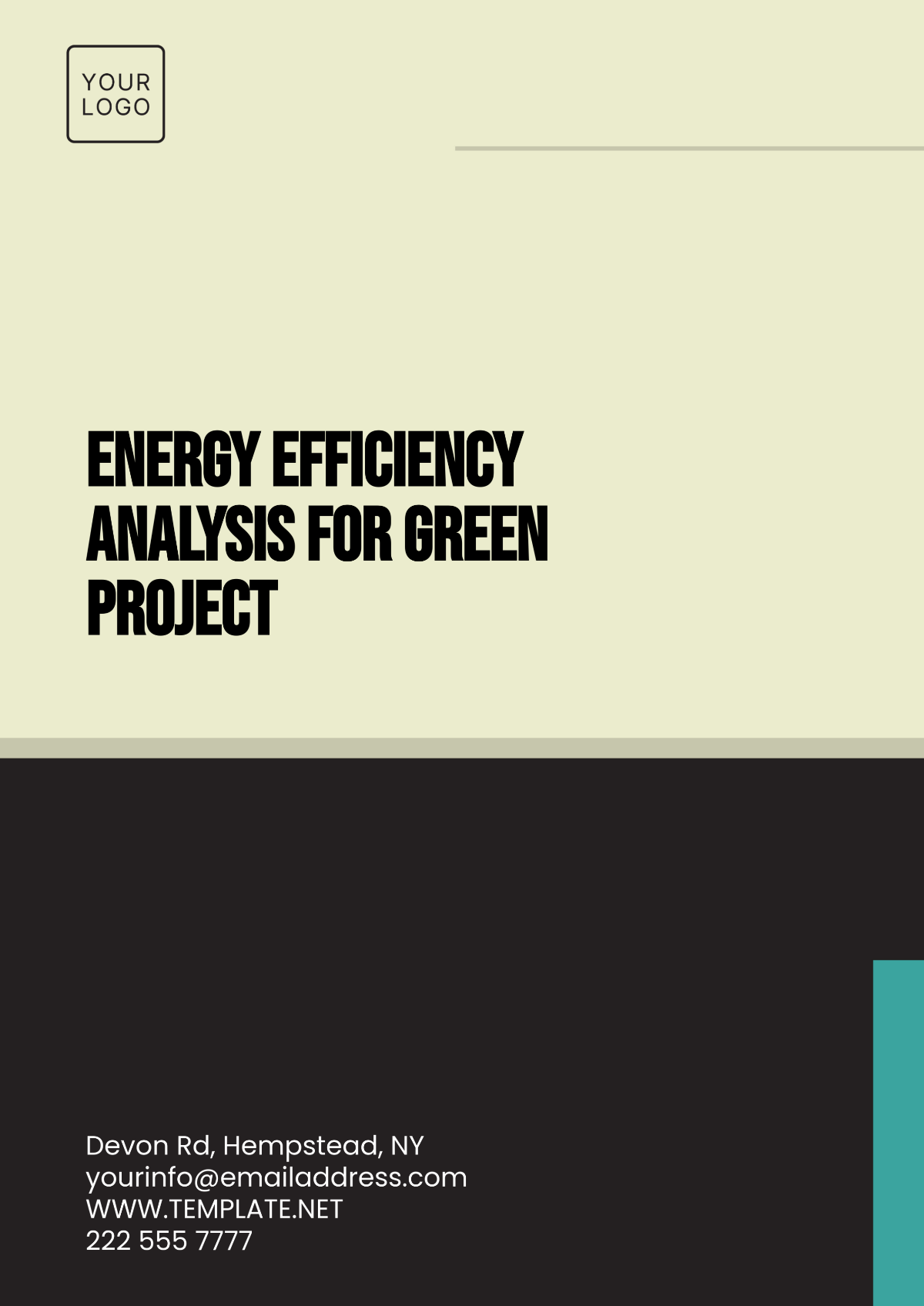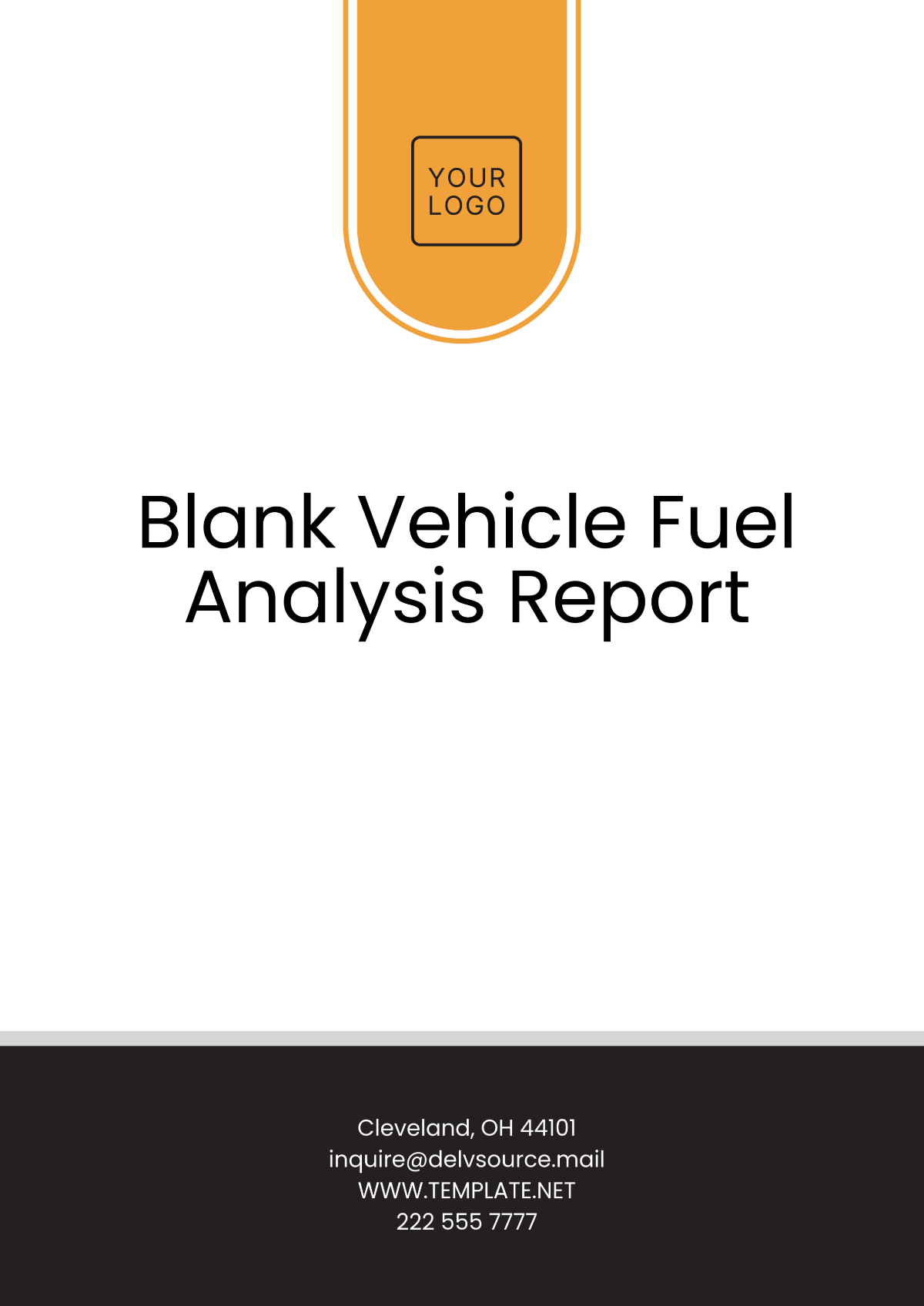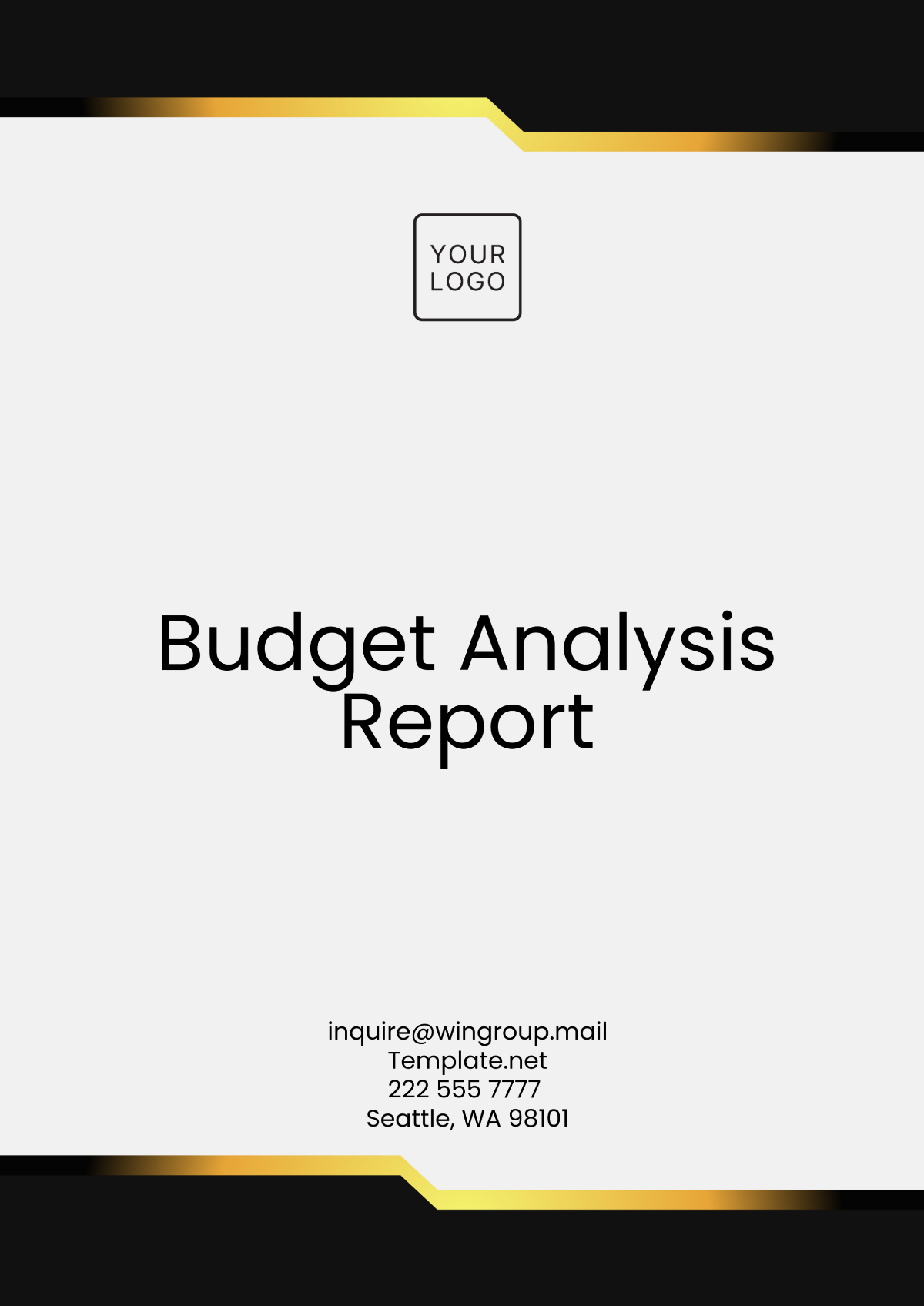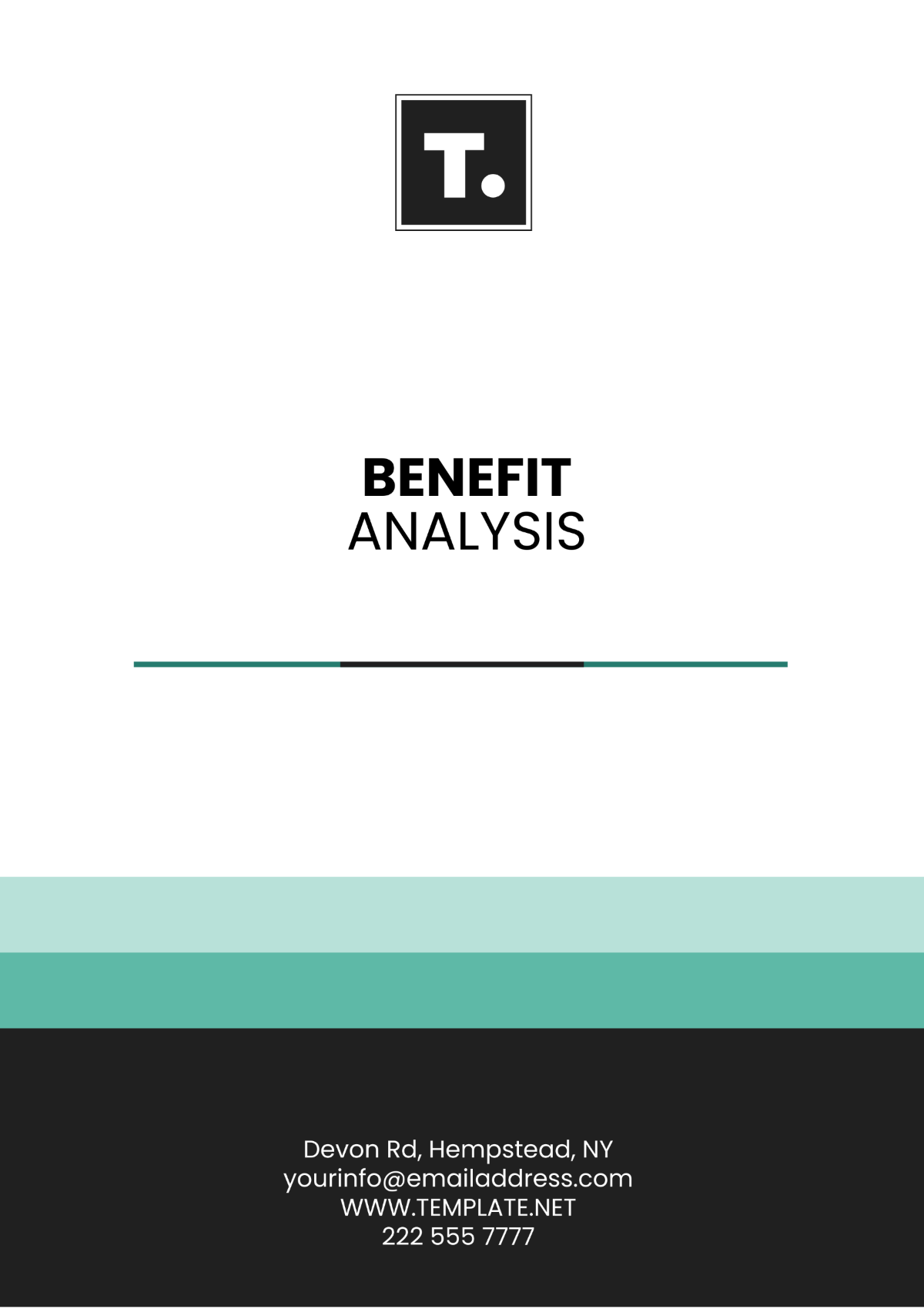Cost Benefit Analysis
Prepared By: | [YOUR NAME] |
Company: | [YOUR COMPANY NAME] |
I. Introduction
This Cost Benefit Analysis (CBA) assesses the financial viability of expanding our solar energy project to increase renewable energy capacity and reduce carbon emissions.
The purpose of this CBA is to provide decision-makers with insights into the costs and benefits associated with the proposed expansion.
II. Project Description
The expansion project aims to install additional solar panels on rooftops across the city to generate an additional 50 megawatts (MW) of clean energy.
Objectives include reducing reliance on fossil fuels, meeting renewable energy targets, and contributing to environmental sustainability.
Key stakeholders involved in the project include Local Government, Renewable Energy Suppliers, and Community Organizations.
III. Costs
3.1 Direct Costs
Details | Description | Amount (USD) |
|---|---|---|
Solar Panels and Equipment | Purchase and installation of high-efficiency solar panels, inverters, mounting hardware, and monitoring systems. | $5,000,000 |
Labor Costs | Hiring skilled labor for site assessment, installation, and maintenance. | $1,200,000 |
3.2 Indirect Costs
Details | Description | Amount (USD) |
|---|---|---|
Permitting and Regulatory Compliance | Fees for obtaining permits, environmental assessments, and complying with local regulations. | $300,000 |
Training and Education | Training programs for workforce development and community education on solar energy. | $150,000 |
IV. Benefits
4.1 Tangible Benefits
Benefit | Description | Amount (USD) |
|---|---|---|
Energy Cost Savings | Reduction in electricity costs for the city residents and businesses due to increased use of solar energy. | Estimated annual savings of $2,000,000. |
Carbon Emission Reduction | Decrease in carbon emissions resulting from displacement of fossil fuel-generated electricity. | Estimated annual savings of $2,000,000. |
Carbon Emission Reduction | Decrease in carbon emissions resulting from displacement of fossil fuel-generated electricity. | Equivalent to $500,000 in social cost of carbon annually. |
4.2 Intangible Benefits
Benefit | Description | Amount (USD) |
|---|---|---|
Environmental Impact | Positive contribution to air quality improvement and mitigation of climate change effects. | Reduced air pollution-related health costs and enhanced ecosystem services. |
Community Engagement | Increased public awareness and engagement in sustainable energy practices through outreach and education initiatives. | Strengthened community ties and social cohesion. |
V. Analysis
5.1 Project Timeline
Phase | Duration | Description |
|---|---|---|
Planning and Permitting | 6 months | Obtain necessary permits and approvals |
Procurement | 3 months | Purchase equipment and materials |
Installation | 12 months | Deploy solar panels and associated infrastructure |
Monitoring and Maintenance | Ongoing | Regular maintenance and performance monitoring |
5.2 Financial Summary
Item | Amount (USD) | Description |
|---|---|---|
Total Costs | $6,650,000 | The sum of all direct and indirect costs |
Total Benefits | $2,500,000 | The sum of all tangible and intangible benefits |
Net Present Value (NPV) | $3,000,000 | Positive NPV indicates project profitability |
Return on Investment (ROI) | 15% | Exceeds industry average, indicating favorable returns |
VI. Conclusion
Based on the analysis, the expansion of the solar energy project is financially viable and offers substantial benefits to the city and its residents.
It is recommended to proceed with the expansion project to capitalize on renewable energy opportunities and contribute to a sustainable future.



